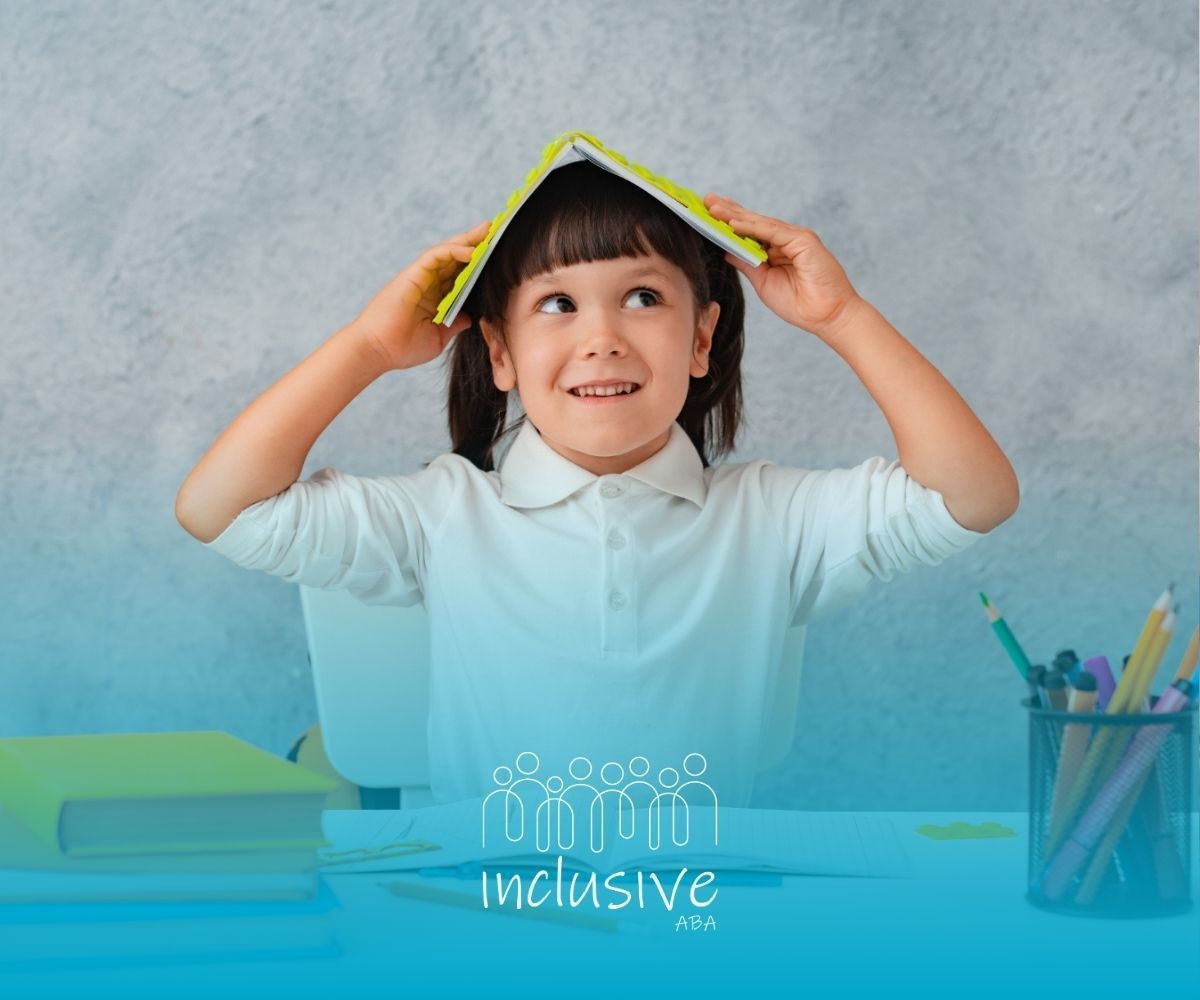
Stimming in Autism: Causes, Benefits, and Coping Strategies
Many parents notice their autistic child engaging in repetitive movements or sounds, such as hand flapping, rocking, or humming. These behaviors, known as stimming, can be puzzling or even concerning at first. However, stimming plays an essential role in self-regulation, sensory processing, and emotional expression for autistic individuals.
Lily’s parents (alias used for anonymity) initially thought her repetitive hand flapping was a sign of distress. They would try to stop her, thinking it would help. However, after consulting with Inclusive ABA, they learned that stimming helped Lily cope with sensory overload and express excitement.
Instead of eliminating stimming, we worked with Lily to identify safe ways to engage in it while also developing additional coping skills. Her parents now understand when to allow her to stim freely and when to introduce redirection techniques.
Understanding why children stim can help parents support their needs while ensuring their well-being. While some forms of stimming are harmless and even beneficial, others might interfere with daily life or cause self-injury. Knowing when and how to address stimming can make a significant difference in a child's development and comfort.
What is Stimming in Autism?
Stimming, or self-stimulatory behavior, refers to repetitive movements, sounds, or actions that help autistic individuals regulate their emotions, process sensory input, and navigate their environment. While stimming can be seen in neurotypical individuals as well (e.g., tapping a pen, bouncing a leg), it is more frequent and intense in autistic individuals.
Types of Stimming in Autism
Stimming can take various forms, including:
- Visual stimming (e.g., staring at lights, spinning objects)
- Auditory stimming (e.g., humming, repeating phrases, tapping ears)
- Tactile stimming (e.g., rubbing hands, touching textures)
- Vestibular stimming (e.g., rocking, spinning, jumping)
- Oral stimming (e.g., chewing on objects, licking)
Understanding these categories can help parents recognize why their child engages in certain behaviors and how to provide appropriate support.
Why Do Autistic Children Stim?
Regulating Emotions and Anxiety
Stimming acts as a self-soothing mechanism for many autistic children, helping them cope with stress, anxiety, or frustration. For example, rocking back and forth can provide a calming effect during overwhelming situations.
Processing Sensory Input
Autistic individuals often experience sensory processing differences. Some may be hypersensitive (over-responsive) to stimuli like bright lights or loud noises, while others may be hyposensitive (under-responsive) and seek out more stimulation. Stimming helps balance these sensory needs.
Expressing Excitement or Joy
Not all stimming is related to distress. Many autistic children stim when they are happy or excited. For example, a child may flap their hands or jump up and down when they hear their favorite song.
Enhancing Focus and Concentration
Some autistic children stim to help themselves focus on tasks. Certain repetitive movements, like finger flicking or tapping, can provide predictability and rhythm, making it easier to stay engaged.
When Should Parents Be Concerned About Stimming?
Harmful Stimming Behaviors
While stimming is typically harmless, some behaviors can lead to self-injury, such as:
- Head banging
- Excessive biting or scratching
- Hitting oneself
If these behaviors occur, seeking guidance from an ABA therapist can help redirect stimming into safer alternatives.
When Stimming Interferes with Daily Life
If stimming prevents a child from engaging in daily activities, learning, or socializing, it might be beneficial to introduce strategies that help them manage their behaviors while maintaining comfort.
How ABA Therapy Can Help with Stimming
Identifying Stimming Triggers
ABA therapy helps identify why a child is stimming and whether it is serving a necessary function or if it is interfering with their quality of life.
Providing Alternative Coping Strategies
Instead of eliminating stimming altogether, ABA therapy focuses on introducing alternative behaviors that fulfill the same needs. For example, if a child bites their hand when anxious, they can be taught to use a sensory chew necklace instead.
Teaching Self-Regulation Skills
ABA therapy also includes self-regulation techniques that help children learn how to manage emotions and adapt to different environments without distress.
Conclusion
Stimming is a natural and essential part of autism that serves various purposes, from self-regulation to sensory processing. While some forms of stimming are completely harmless, others might require gentle guidance and intervention. Understanding the reasons behind stimming allows parents to support their child effectively while ensuring their well-being.
At Inclusive ABA, we provide personalized therapy plans to help children with autism develop self-regulation skills while respecting their natural behaviors. If you're looking for expert guidance on stimming and autism, contact us today to learn more about our supportive ABA programs!
FAQs
Is stimming always a sign of autism?
No, stimming is not exclusive to autism. Many people engage in self-stimulatory behaviors, such as tapping a pen or bouncing a leg. However, in autistic individuals, stimming tends to be more frequent and serves a crucial role in self-regulation.
Should I stop my child from stimming?
Not necessarily. Stimming often helps children cope with stress, anxiety, or sensory overload. However, if the behavior is harmful (such as head-banging) or disrupts daily activities, gentle redirection or alternative coping strategies may be beneficial.
Can ABA therapy help with stimming?
Yes, ABA therapy can help by identifying the purpose behind stimming and teaching alternative, safer, or more socially appropriate behaviors when necessary. ABA therapists work with parents to determine when stimming should be redirected and when it should be accepted.
Looking for Expert Help? We're Here for You!
Our compassionate and skilled team is devoted to enhancing your child's development through customized ABA therapy. Let us partner with you to create a supportive environment for your child's success.
Discover how we can help your family thrive with expert ABA therapy.
Send a Fax
303-616-1189
Mon-Fri: 9Am to 5.30 Pm
Sat- Sun: Closed












